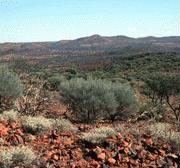Age of Liquid Water on Mars and Martian Bugs on Earth?! Where to Look for Martian Life?
When: December 18, 2003 12AM PST

Searching for the most “life-promising” sites on Mars is an important direction in the scientific program of the Russian Astrobiology Center (RAC).
General astrobiological concept “follow the water” should be corrected as “follow liquid water” when applied to such a cold planet like Mars. We propose a new method to determine the timing when the water on Mars was liquid. The method is based on measurements of isotopic ratios of gases dissolved and (trapped) in ice. During water-freezing events dissolved atmospheric gases could be “trapped” in ice. Abundance of the dissolved gases depends on their chemical composition and atmospheric partial pressure. However, the composition of the Martian atmosphere was changing in time. Therefore, by measuring dissolved gases we can reconstruct the age and conditions when the freezing took place. The most promising ratios to measure are 15N/14N, 36Ar/38Ar, 40Ar/36Ar,. Our estimations show that using those ratios we can determine the age of the last contact of the liquid water with the Martian atmosphere with the accuracy of ~100 Myr. We also consider measurements of 3He (produced by the cosmic rays) which can constrain freezing events in the Martian soil on the short (~100 Kyr) timescale.
Using proposed method, we can also reveal the imprints of ancient biological activity by measuring biogenic gases like NH3, CH4, H2S, which are virtually absent in the modern Martian atmosphere. Those gases are subject to quick oxidation in the Martian soil. However, ice and permafrost are good environments for the preservation of these gases, especially for the well-dissolving NH3, which effectively incorporates into the ice matrix.
Can we see traces of the hypothetical Martian microorganisms in our own biosphere? Such provocative question inspired another research area at the RAC. High radiation tolerance is hardly necessary for the survival in any natural environment on Earth. Nevertheless, a number of microorganisms (radioresistant bacteria) posses this peculiar ability.
It was shown that “ordinary” bacteria (?scherichia coli and two species of Bacillus) can develop radioresistance ability after the multiple cycles of exposure to the high (almost lethal) radiation dosages, followed by recovery of the bacterial population.
We show that natural cycles of this kind could take place only on Mars. Martian biota would accumulate large radiation dosage during the periods of cold climate, when it would be in the dormant state and would rebuild its population during the periods of warm climate. We demonstrate that hypothetical Martian microorganisms could develop radioresistance just in several millions years.
Martian biota could have been transported on Earth several times by meteorites, what in turns would explain the existence of several different types of the radioresistant bacteria in the Earth’s biosphere.
We propose that the Martian polar regions (top tens cm to several meters under the surface) are the most promising place for the Martian life detection by space missions.
 A Record of the Earliest (4.5-3.8 Ga) Surface Conditions on Earth?
A Record of the Earliest (4.5-3.8 Ga) Surface Conditions on Earth? Simulating Groundwater Radiolysis With Oxidation of Pyrite by Hydrogen Peroxide Solution
Simulating Groundwater Radiolysis With Oxidation of Pyrite by Hydrogen Peroxide Solution Exploring Planet-Forming and Debris Disks
Exploring Planet-Forming and Debris Disks Quantifying Water Production in Comets - The "Meter Stick" for Their Chemical Taxonomy
Quantifying Water Production in Comets - The "Meter Stick" for Their Chemical Taxonomy